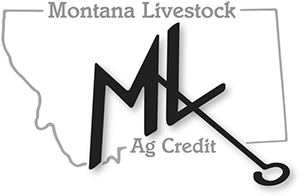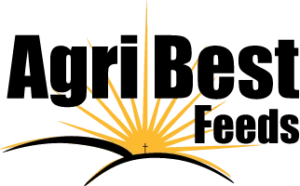Martin Townsend serves as the Ranchers Stewardship Alliance Conservation Committee Coordinator. Ranchers Stewardship Alliance leaders formed its Conservation Committee in 2017 in order to gather representatives of the ranching community, state and federal agencies and conservation organizations.
The purpose of the Conservation Committee is to establish collaboration and cooperation with partners of similar interests; develop long-term productive relationships addressing our common interests; and administer project funding from successful grants. As coordinator, Martin works with Conservation Committee Chair and RSA board member Sheila Walsh to lead and coordinate the committee’s work.
Martin, tell us about yourself – where you’re from, how you got here and where you’ve been:
I grew up in Manhattan, Montana. I went to college at Northwest College in Powell, Wyoming and finished my degree at MSU Bozeman. I graduated with an agriculture education degree. I started working as a range seasonal for the BLM (Bureau of Land Management) in college, and I worked here (in Phillips County) one summer. So I lived with my grandparents that summer and spent a lot of time with my aunt and uncle who farm here.
I really enjoyed that summer in college, being a range seasonal, helping with range monitoring, stuff like that. Growing up, I remember seeing the BLM guy with my uncle on his ranch, watching him and what he did… I couldn’t believe that was a job. It sounded like the most fun thing in the world. That’s what I enjoy most about my job now — being able to work with ranchers and farmers to help improve their places and help them meet their goals. That’s what I got to witness as a kid – the BLM specialist helping to improve the resources and grazing of my family’s ranch.
Tell us more about what your current role is and what you do?
I’m a Sage Grouse Initiative Rangeland Conservationist. I’m hired by the Soil and Water Conservation District of Montana to work in the Malta NRCS (Natural Resource Conservation Service) office doing NRCS conservation planning and contracting. I work with private landowners to address resources concerns on their property affecting things like soil, water, air quality, wildlife habitat and livestock production. We want to help improve those resources in ways that improves production and the resource. I do a lot through the Sage Grouse Initiative, helping ranchers implement grazing management in ways that supports sage grouse habitat. I work with a lot with the Sage Grouse Cropland Initiative, where we seed marginal production or marginally needed cropland back to perennial grass. I also work in all of the other NRCS programs, as long as they have a benefit for wildlife and resources.
How did you get involved with the Ranchers Stewardship Alliance’s Conservation Committee?
I started my job a month before it existed. Kelsey Malloy was doing an invite-a-friend to the RSA board meeting. I went, and then went to a Conservation Committee meeting and assumed it had been going on the whole time, because it was so well-run. Turns out, that was their first meeting! From there on, the word was out that they were looking for projects focused on converting expiring CRP (Conservation Reserve Program) into viable grazing systems.
That was the summer of 2017. The summer of 2017 was record-setting drought, so it really highlighted where people were low on water. At that point, available water became the most limiting resource for agricultural production. There were people who had absolutely no well water; if they ran out of surface water, they have no water, and it would have been a lose-lose-lose to get rid of cattle at that point. The Conservation Committee was able to step in and help ranchers develop some new water sources with some of its funding.
How do you describe the work of the RSA Conservation Committee?
It’s the local hub for anything and everything conservation. Every interested agency and group that operates in any arena involving conservation in this area in some ways works with the RSA Conservation Committee. It’s the hub.
What’s the most rewarding part of being on the committee?
I think it’s the collaboration used to get projects working on the ground. We can bring projects to the committee that we are having trouble moving forward in our own agency. We can bring it before the group and ask for help, or one of the other partners will say, we can fund this, or have you thought of this? We usually end up with a better conservation product at the end.
With all those entities in the room, we’re able to make a more thoroughly thought out plan – something that’s better for farmers and ranchers, better for wildlife, better for the resources. We can work on more projects and it’s led to an increase in conservation in this area, as all of our groups are working together as opposed to each entity only focusing on their scope or interests. It opens up what you can do with these projects.
What does the future of North-Central Montana look like with this kind of approach to conservation?
I think the biggest thing that the future is going to show is that relationships between private landowners and these groups will improve. These groups are doing a better job of working together and working with and for landowners. That means an overall improved working relationships within groups and agencies working here.
In the past, there has been tension between all those groups. I think the Conservation Committee serving as that hub creates a very open and transparent relationship so that ranchers and landowners can see what these agencies have to deal with in their job, and these agencies can get an up-close view of what ranchers are dealing with in their jobs. It creates a great connection between the two.
What does RSA’s mission, “Ranching, Conservation, Communities – A Winning team!” mean to you?
I think it embodies what we try to do with the Conservation Committee. Everything we do in the Conservation Committee must have qualities in those categories to make sure that everything we do has a positive impact on ranching, conservation and communities. I think that’s why the works of the committee rings so true for conservation agencies and landowners.
Anything else you’d like to share about being a member of the RSA Conservation Committee?
Last year, RSA had a pot of money, and Ducks Unlimited had a little money and NRCS had a little money… together, in one Conservation Committee meeting, we went through 15 different projects. By the end of it, we took those 15 projects and pooled at least four times as much funding as RSA had. We were able to send some projects to the Fish and Wildlife Partners program, some to Ducks Unlimited, some to Pheasants Forever, like that.
At the end of that meeting, we looked at all of those projects and had a whole lot more for all of them. That was neat to see. If it would have been just one person coming to RSA to get these projects done, only a fraction would have been funded. But by working together, we were able to fund four times that. That’s exciting to me. It’s exciting for conservation in our communities.



